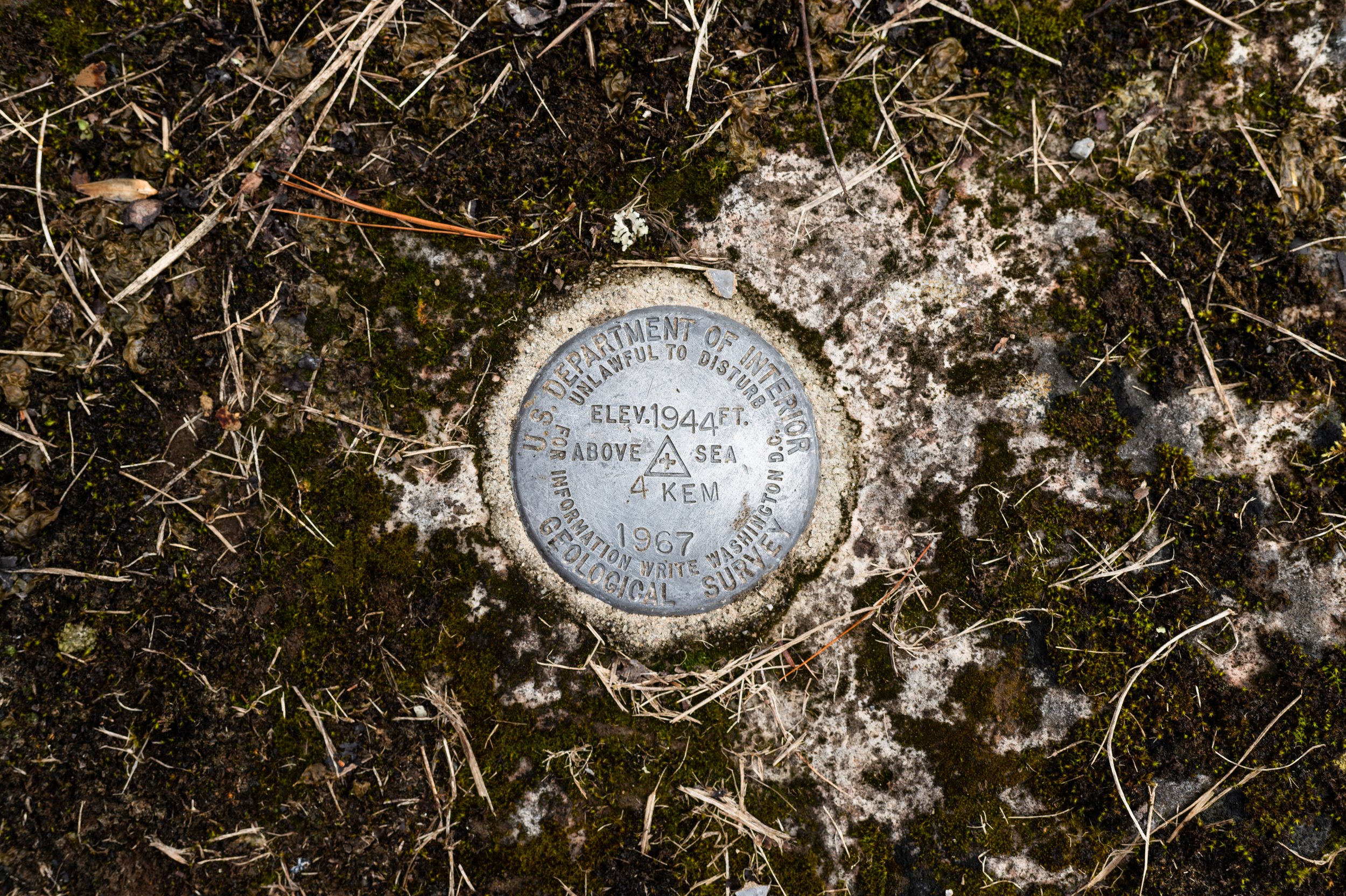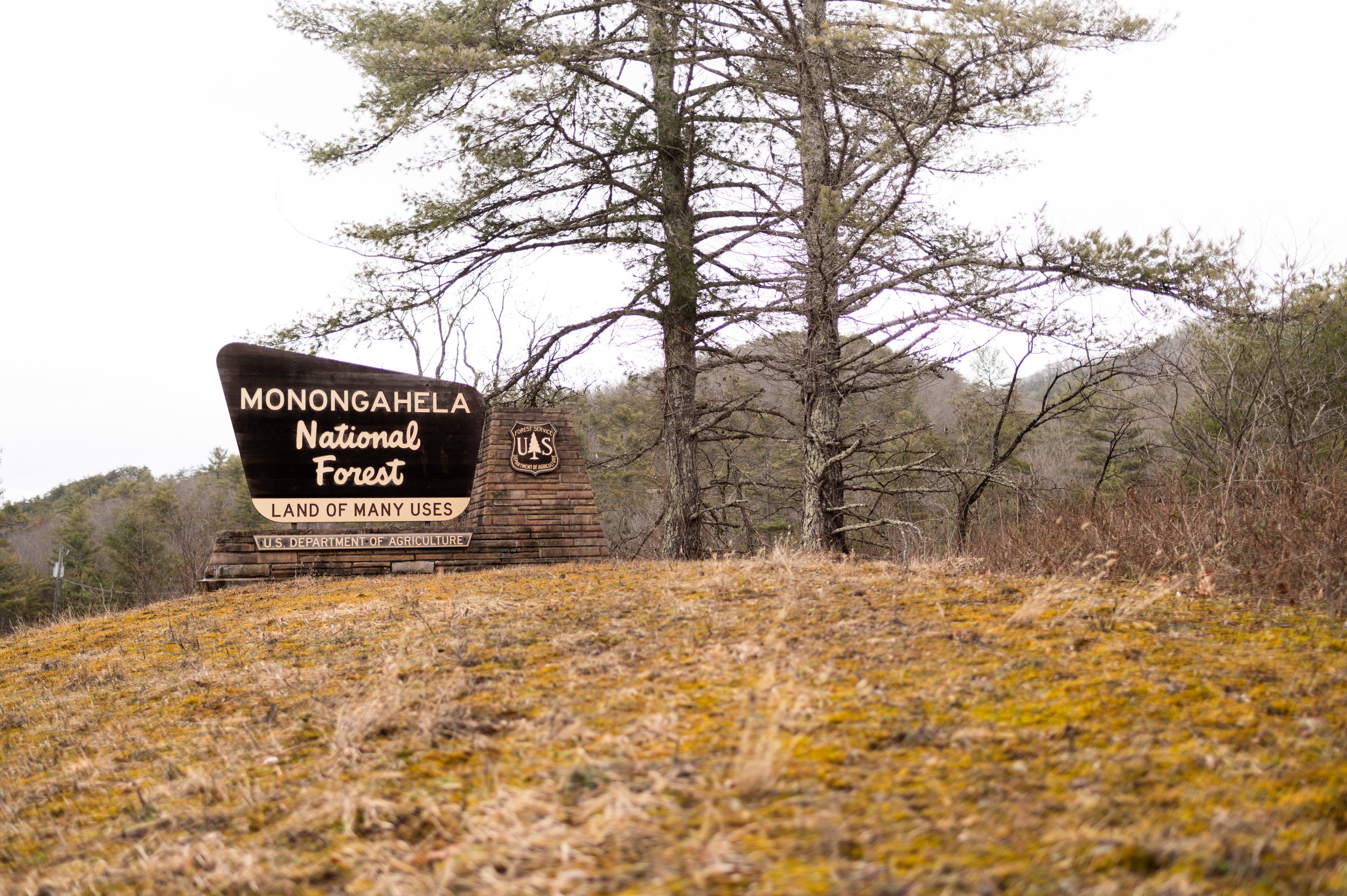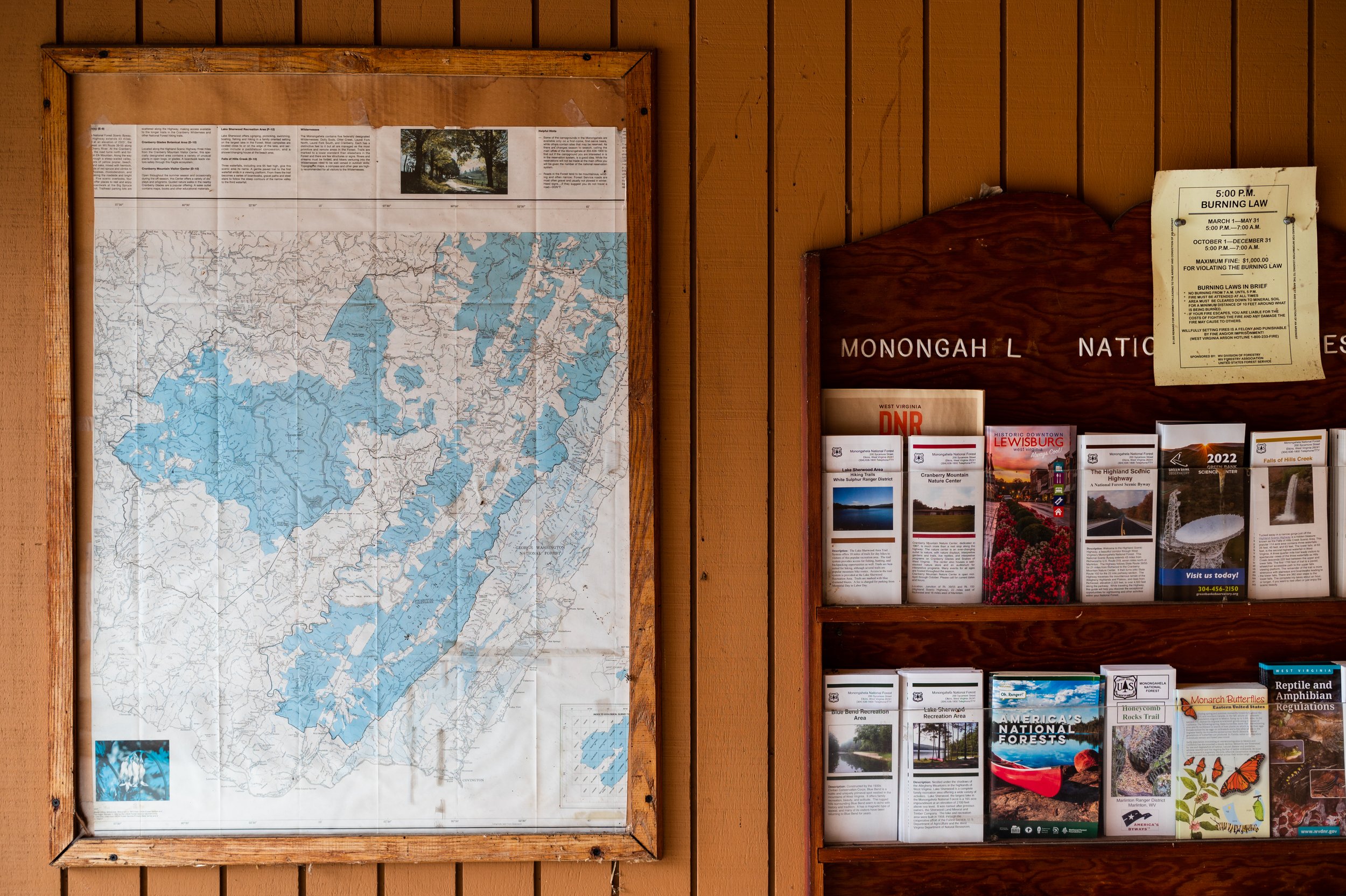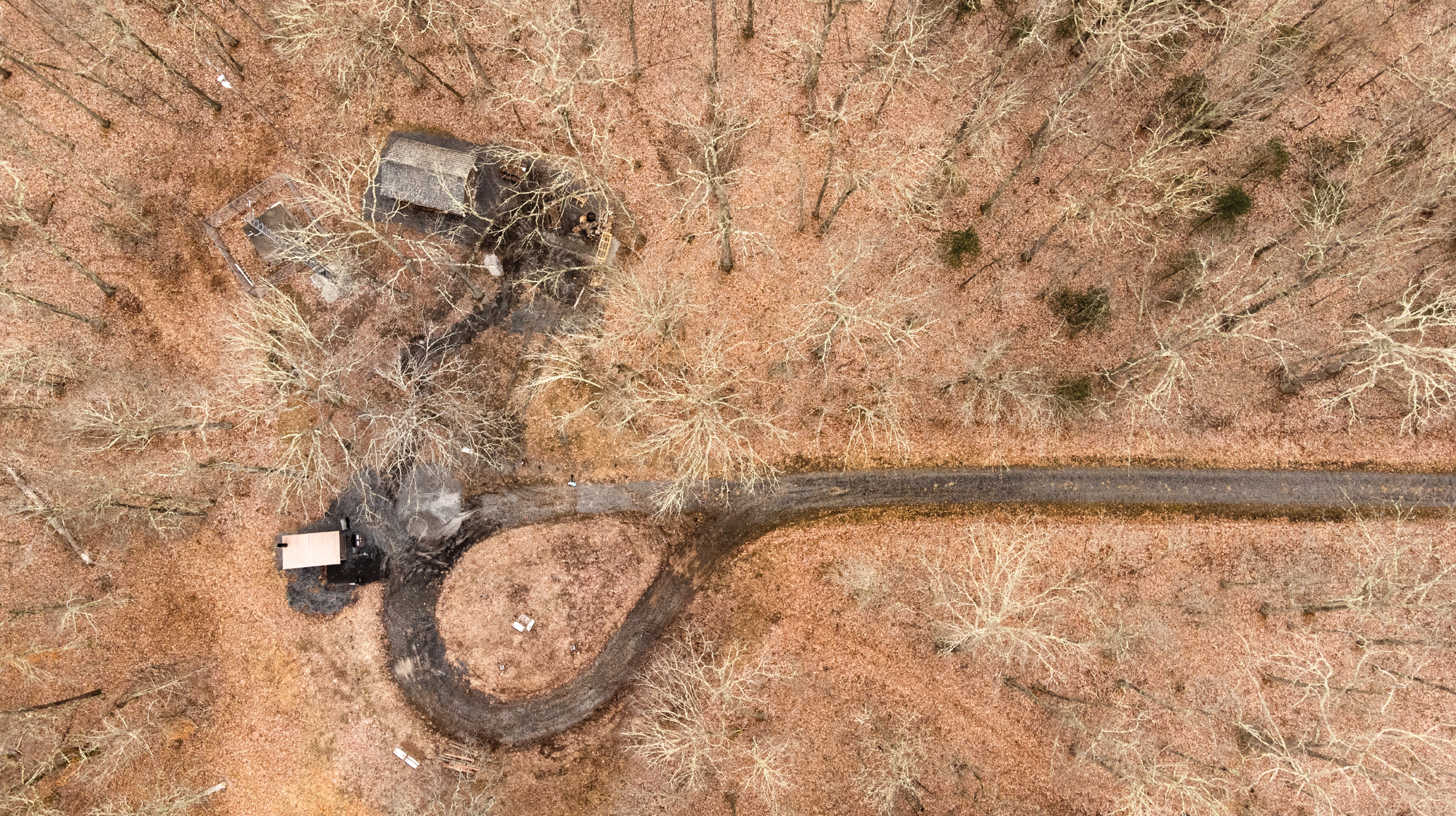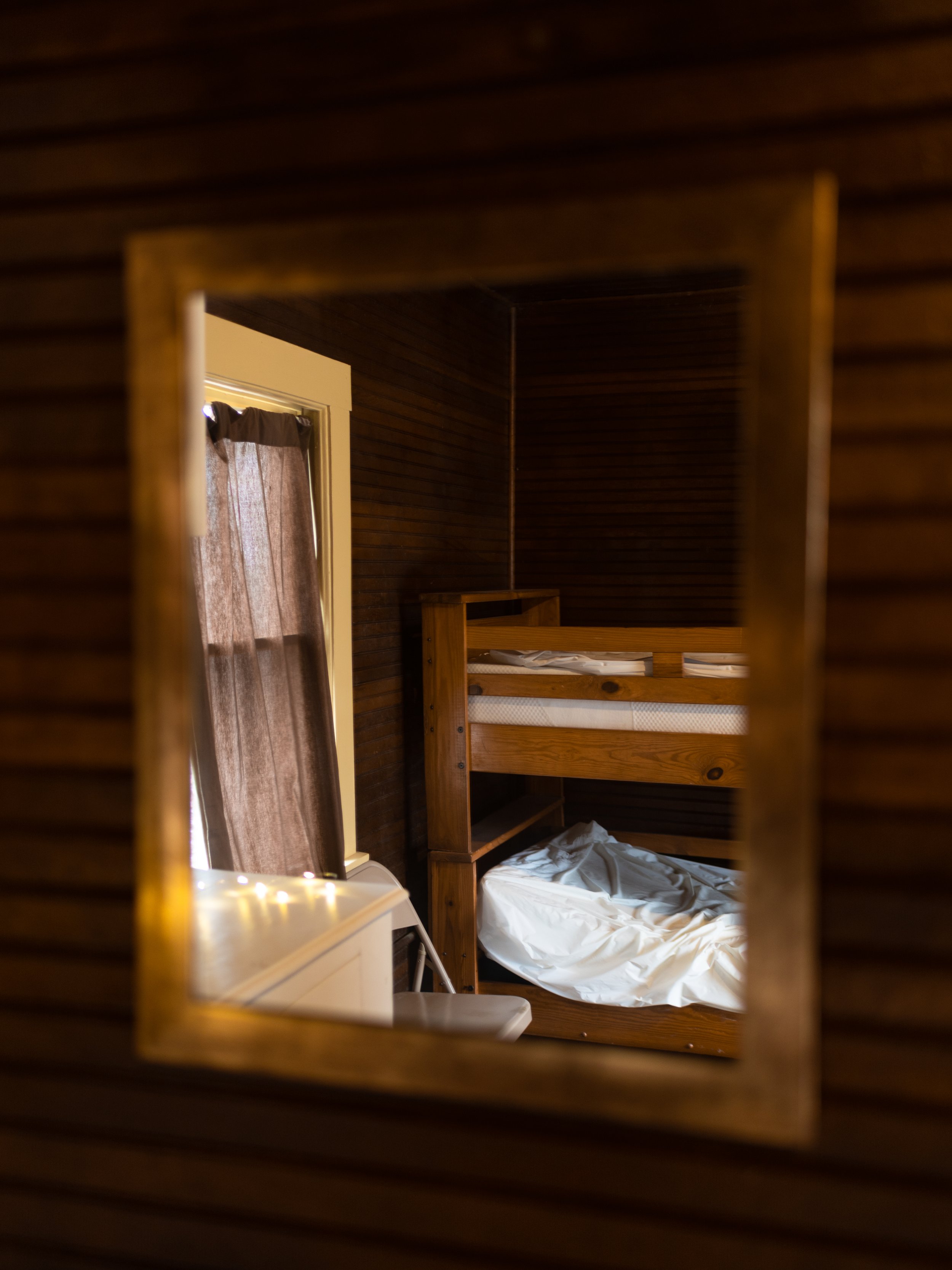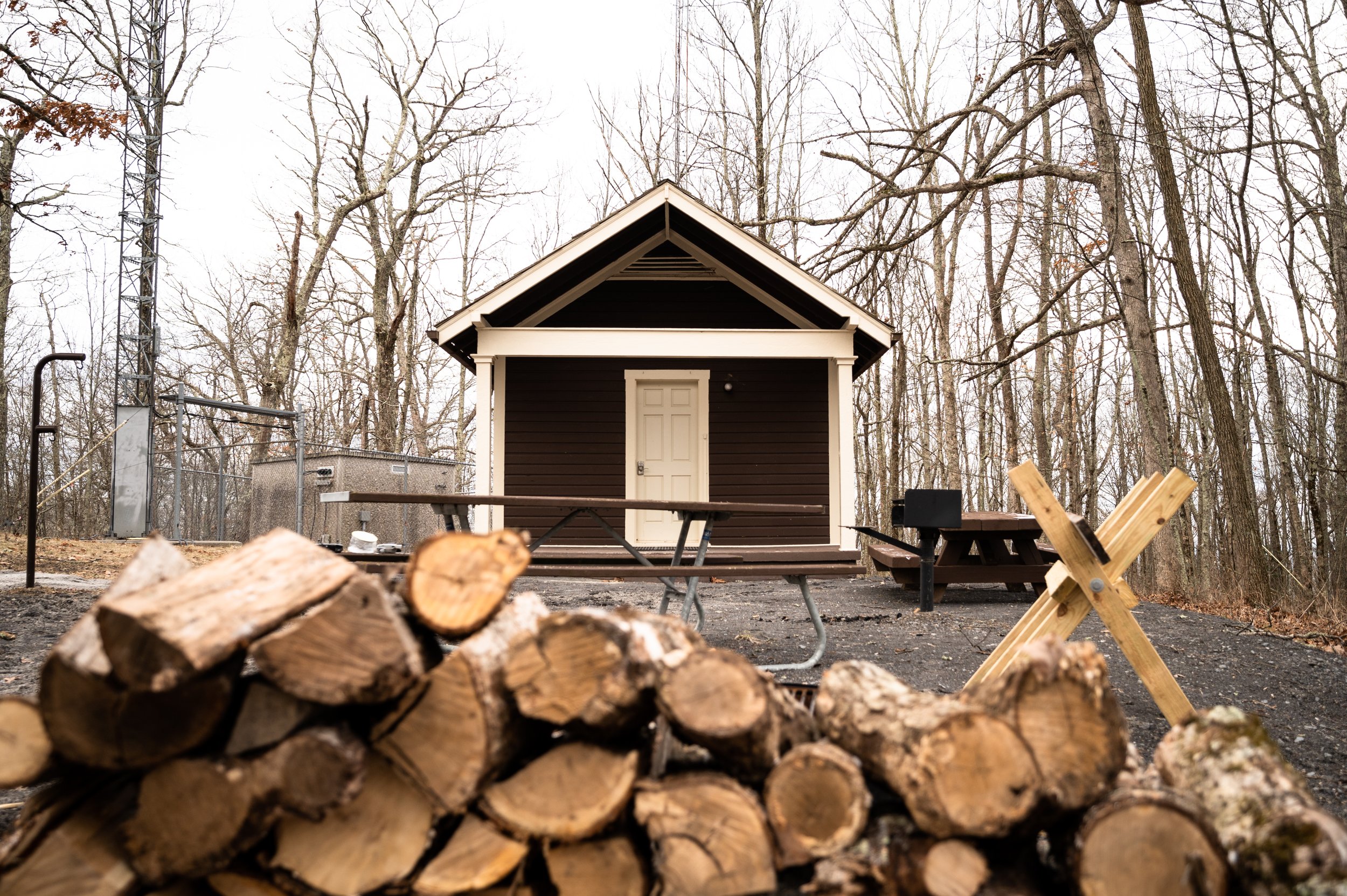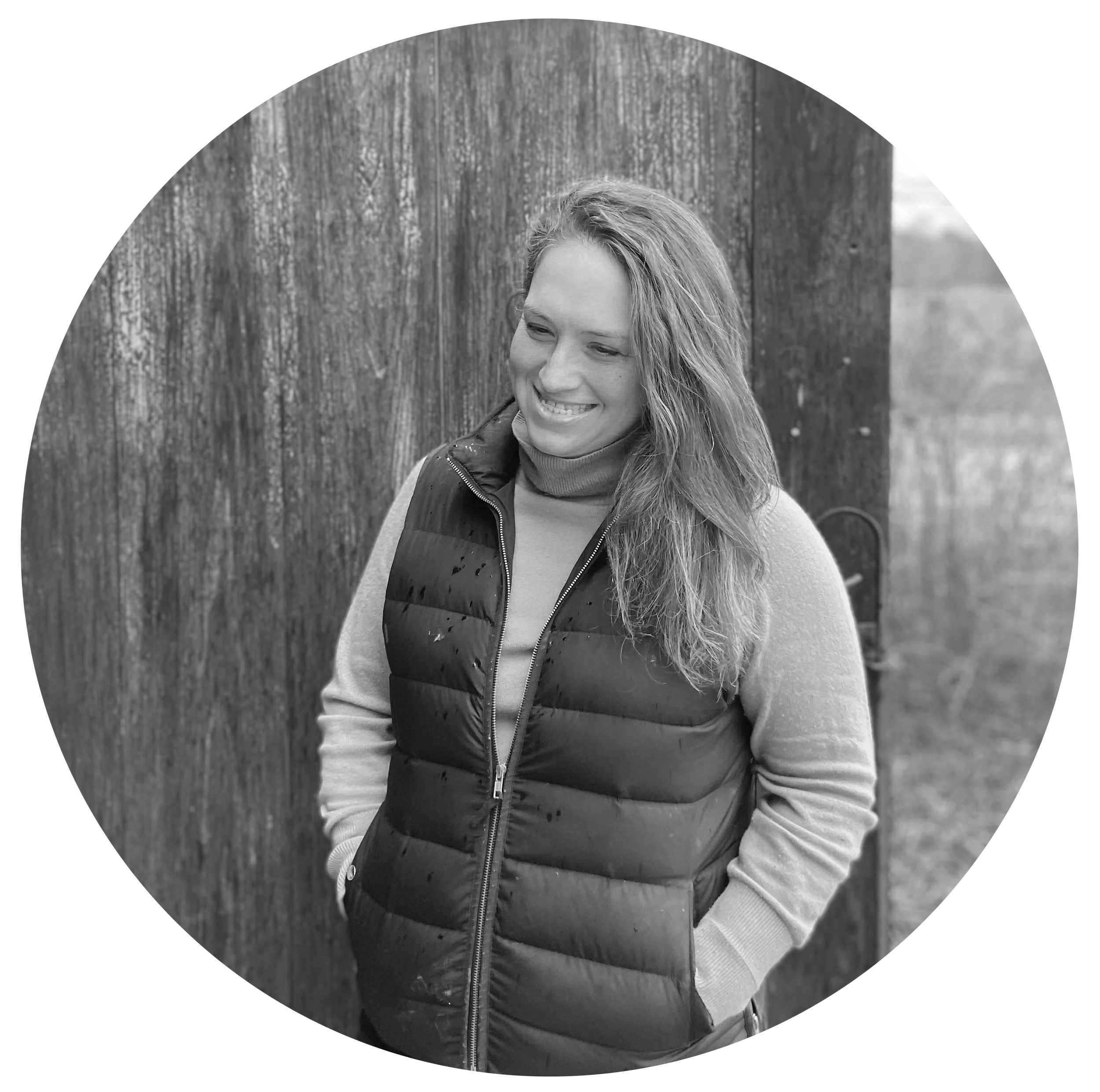In the fall of 2020, Elizabeth Johnson lived in a historic fire spotter’s cabin in West Virginia’s Monongahela National Forest — a wild and mysterious place. During her monthlong stay, she learned about survival, meeting nature on its own terms, and tackling loneliness.
Story by ELIZABETH JOHNSON | Photographs by STEPHEN COOK
On the day I arrived in West Virginia, district ranger Yvonne Rice took me on a driving tour. A longtime employee of the U.S. Forest Service, Yvonne was relaxed and chatty as she whipped the truck around the mountain curves, and the combination of her driving and the hot breath behind my face mask meant my only focus was on not throwing up. I caught snippets of the orientation she provided from the driver’s seat — rattlesnakes would be lethargic, but more aggressive as the weather got colder; at one convenience store we passed, I should never eat the barbecue, at another, the hot dogs. Watch for snakes, avoid gas station pork, and please don’t let me throw up on my first day. I could do this.
We started up the mountain toward Hopkins Cabin, and from the passenger-side window, I watched the narrow dirt road drop steeply off into the valley. We barely squeezed past the parked trucks of bear hunters, our wheels skirting the edge of the drop-off. “It’s chase season,” Yvonne told me.
Chase them where? I thought.
It was October 2020, and I had taken a position caretaking Hopkins Mountain Fireman’s Cabin, a historic fire tower observer’s cabin in the Monongahela National Forest. The Monongahela comprises almost 1 million acres of protected forest blanketing the mountain ranges on the eastern edge of West Virginia. The cabin itself was not much to admire — just a 14-by-13-foot gable-roofed room with a small concrete front porch. But the view from the porch — an eastern-facing vista of layered mountain ranges, nesting together far into Virginia — was breathtaking.
October was poised to be a difficult month. Between the election and the pandemic, America was fragile and volatile, and mountaintop isolation seemed like both a responsible action and a means of self-preservation. If America was a nation on fire, then what better place to observe the blaze?
This monthlong posting with the U.S. Forest Service was part of a year I had taken away from teaching. I would tell people I was on sabbatical, but sabbatical implies that you have some kind of reentry plan, and I didn’t. I found the position in August on volunteer.gov, a website posting volunteer opportunities available in national parks and on public lands. Light renovation, painting, and general upkeep needed for the month of October at the historic Hopkins Cabin, the description read. I applied immediately and called to follow up the next day.
We are the landscapes we know, and everything else is foreign territory. I’ve lived my life at sea level, anchored in the marshes of eastern Virginia. And while I’d like to say I went to the woods for inspiration, or extended periods of uninterrupted silence, I really went to the woods just to see if I could.
I need to know I can rely on myself, I told a friend, who wondered why I couldn’t learn self-reliance somewhere with running water.
The Hopkins Mountain Fireman’s Cabin is a historic 14-by-13-foot fire tower observer’s cabin in the Monongahela National Forest. The fire tower, cabin, and mountain road were built by the Civilian Conservation Corps in 1935.
The road to Hopkins Cabin was about 5 miles, but on that first drive with Yvonne, it felt endless. Who was this person who wanted this posting? Where was she now? The last few hundred yards lay behind a locked gate, which had been installed years earlier to keep hunters and the occasional group of high school partyers from accessing the property. If you’d survived the drive up there, I wasn’t sure how a five-minute walk would be a deterrent, but Yvonne dutifully unlocked the gate and we drove through.
I moved into the cabin on a Friday afternoon, as a rain started that lasted all weekend. After we brought my car up the mountain, Yvonne gave me the keys to the gate and a Forest Service radio, then drove out, locking the gate behind her.
It was early October, and the pandemic was teaching all of us about isolation and self-reliance. Even so, as Yvonne drove away and evening set in, I saw my new solitude blanket the landscape. I could almost reach my hands out and touch it.
I put my propane stove on the porch and rested my back against the cabin wall, watching the rain fall into the forest and trying to pretend I was in a meditation app. But these woods, these mountains, this place, it was all foreign territory, and I was taking careful steps. That first night, I lay awake on the bottom bunk, unsettling myself with my own shallow breathing. I suppose I was afraid, but I’d like to think a part of me was curious. I’d had plenty of nights in tents, often by myself, so what was this new level of silence? Why did I feel so much more alone?
No one told me the Forest Service radio would go off every morning at 7 a.m., which, since I had finally fallen asleep only a few hours earlier, startled me awake and into a state of sleepy panic. Was something happening? Did they need me? Should I reply? Days later, more accustomed to the West Virginia drawl, I realized the radio operator came on each day to wish everyone a good morning and announce the weather report. Had I replied, it would have gone out across all U.S. Forest Service radios in the Monongahela, which would have been even worse than throwing up in Yvonne’s truck. But I didn’t have time to consider replying, as right after the radio announcement, I heard a knock at my door.
I thought about the bear hunters. I thought about every movie I’d ever seen that involved a cabin far out in the woods. I had a brief fantasy about those camera doorbells or even a hotel-style peephole. I was clueless, unarmed, unsure if radio correspondence had been trying to warn me of something — and also, in my pajamas. I opened the door.
A man in his 60s wearing full rain gear and smoking a cigarette was standing at the bottom of the porch steps. His name was Mike, although I didn’t know that yet.
“You survived!” he said.
He added something about getting started next week, then turned and headed back down the mountain.
‘Meeting Nature on Its Terms’
In the early days of my caretaking, when the supplies for the cabin were still on order, I spent most of my daylight hours on the trails in the Big Draft Wilderness, the area that begins at the bottom of the mountain. At the lower elevations, the Big Draft was thick with moss and fern that grew in the cold mist from the creek, and glossy rhododendrons made tunnels over the trails. I climbed switchbacks that led to long ridge tops and scanned the bare forest for the yellow shock of witch hazel in bloom.
Alone out on those trails, it was easy to believe that the forest was my co-conspirator. Even the language on the map to the Big Draft Wilderness seemed to speak to my goals: “The Forest [Service] manages wilderness to offer visitors challenge, discovery, and self-reliance. ... We therefore manage these areas for the protection of the resource, not for visitor comfort or convenience. This enables you to meet nature on its terms, not modify it to suit your own. ... In most cases, you will have to get yourself out of whatever predicament you get yourself into.”
I thought a lot about my own predicament in those woods. I thought about my paused teaching career, my ambivalence in returning to it, and the fact that after this month, I had no idea where I was headed. In my weeks of hiking those trails, the only other person I ever encountered was a poet and English professor at a local college. I remember thinking, Good one, Monongahela.
When the paint showed up, Mike reappeared. He worked with the Forest Service as a part of its retiree program, and he’d lived his life in these mountains. Mike was generous and kind and had a high tolerance for answering my questions.
The owls that hooted from the trees every night at dusk? Great horned owls. The purple flowers that grew along the mountain roads? Chicory.
The shotgun shells I would regularly find in the woods? Squirrel hunters.
Squirrel hunters?
I was holding a ladder for Mike when he spouted off a list of things he loved to cook out of squirrel meat: squirrel gravy and biscuits, fried squirrel legs, squirrel salad.
“You know, I wouldn’t even know how to start cooking a squirrel,” I said, trying to contribute to the conversation.
To which Mike replied, “Well, first, you’re gonna get yourself a pot of boiling water ... ”
A pedestrian suspension bridge, located in the northernmost section of the Big Draft Wilderness, passes over Anthony Creek.
It wasn’t just squirrels. Black bears were thick in the forest, and every morning I sat on the porch with my coffee and listened as the hunters and hound dogs chased them through the trees. Yvonne had told me the bears would break the cabin windows if I didn’t keep all the smells under control, so I took to storing my trash in the concrete block that surrounded the pit toilet, about 20 yards from the cabin. Every night I’d have the same internal debate about going outside — but then I’d put on my headlamp and head into the night to stash my trash and spit out my toothpaste.
When I felt most alone up there, I tried to imagine the many people who had made it a home before I bumbled in. The fire tower, the cabin, and the mountain road were all built by the Civilian Conservation Corps in 1935, but of course folks had been using the mountain long before the structures were in place. An Indigenous Native American community was located west of the cabin, just outside the boundary of the Monongahela, and the trail spiraling down the mountain is believed to have prehistoric roots. The historical documents I found in the cabin also noted that the trail was used heavily by traders in the 18th and 19th centuries and that “The Civil War Trail,” as it came to be known, was used by rapidly retreating Confederate troops during the Battle of Droop Mountain.
And yet, despite all the characters I could have summoned to keep me company, the one I wondered the most about was Edgar Hull. Lookout Edgar Hull lived in the cabin in the 1960s, inheriting the job from his father, who had spent 11 years as the Hopkins fire tower lookout. I knew this only because Mike gave me a copy of the 1963 Sports Illustrated article that profiled Hull, providing extensive details on how to track a fire and maddeningly few on the life he led between blazes. I wanted to know him, this person who had inherited how to be at home up here. I don’t know if Edgar Hull was the last person to serve as lookout, but the Forest Service dismantled the fire tower in 1979, although they left the original concrete piers that mark the tower’s footprint.
One of the largest tasks I had was to scrape and repaint the entire exterior of the cabin in brown and white to match the original 1935 construction. The paint names were “Heavy Cream” and “Milk Chocolate,” and I couldn’t help but imagine some Brothers Grimm style of transubstantiation as I globbed it on the exterior.
‘Whatever Predicament You Get Yourself Into’
It was rumored that you could buy a $50 permit to go Bigfoot hunting in the Monongahela.
“So, it’s a fundraiser?” I asked Mike as we ate our sandwiches at the picnic table, admiring our half-finished paint job.
Mike gave me the look I’d become accustomed to, as though he were trying to sort out exactly how I had arrived here, or if I’d recently sustained a head injury. On my trips into town for supplies, I’d see cans of beer adorned with Sasquatch and Mothman illustrations. I knew they were a part of West Virginia lore — what I didn’t know was that the Big Draft was a prime spot for those looking to hunt them.
A few nights later — teeth brushed, trash locked inside the toilet — I was reading in the bottom bunk when I heard scratching and rustling that sounded like mice. There were so many mice. But then I started to hear chewing; it sounded like something was taking bites out of my candy cabin from the outside. I had the strange calm of knowing I would have to figure this out myself, the luxury of panic left to those with the hope of someone else to turn to.
I got up and turned on all the lights to scare it away, but the chewing just got louder. It was the distinct sound of teeth or claws gnashing into the wooden exterior. Did raccoons have big teeth? Did black bears eat wood siding? I got a broom and banged the handle as hard as I could against the wall that was being chewed. It kept chewing. I certainly wasn’t going outside, so I did the only other thing I knew to do: I just got back in my bunk bed and pulled up the covers, a $50 permit suddenly seeming like a deal.
I loved the company and conversation during workdays at the cabin, when Mike and Yvonne would bring a group of folks to help — sometimes a fire team waiting on an assignment or AmeriCorps members or park rangers from another district. But most days I was on my own, painting or clearing brush or spreading gravel, marking the time with whatever I could find on the radio.
I paid no attention to the forecast. If I didn’t catch the radio broadcast at 7 a.m., or if that particular dispatcher had an accent that escaped my limited understanding, I just looked out over the clearing and hoped for the best. I loved to push my grocery supply to the edge before restocking, so I was pondering maple syrup as a dinnertime quesadilla ingredient when I heard Yvonne come across the radio. Huge storm coming ... base of the mountain would certainly flood ... the cabin should be OK, but the mountain road might wash out. If it did, it could be days before they could get up to check on me.
You will have to get yourself out of whatever predicament you get yourself into. I wasted valuable daylight as I sat outside on the porch and thought about self-reliance, about times when you need things to be hard, but also knowing when to let them be easy. It was dark and already pouring when I packed some essentials into the car, and I drove through the night to my brother and sister-in-law’s house in Baltimore.
The view from Hopkins Cabin overlooks surrounding mountains in the Monongahela National Forest. Elizabeth Johnson writes, “ … the view from the porch — an eastern-facing vista of layered mountain ranges, nesting together far into Virginia — was breathtaking.”
When I returned a few days later, the temperatures had dropped and, like an idiot, I didn’t start up the mountain until after nightfall. Edgar Hull would have anticipated needing daylight. Edgar Hull would have realized the fallacy in returning to our isolated mountain cabin after a huge storm assuming everything would be fine.
Halfway up the mountain, the storm had dropped a tree, blocking the road. The leafy top and its branches dangled over the drop-off. It was Sunday night, and I knew my radio call was just echoing through empty government-issued pickup trucks. So I bundled up, using anything I could find in the car to hack off limbs — my headlights blaring as I twisted and pulled at the tree with stinging hands until it was light enough to push aside. I jumped out when I finally inched my car past the tree, eager to take in the fact that I had been the one to move it. I looked up at the sky triumphantly, and then silently prayed the roof was still on the cabin.
A week after the storm, two good friends came to visit for a night and camped down at the edge of Big Draft. The fog was so thick it hung heavy at the lowest elevations, and it was impossible to even imagine the view from the cabin or the steepness of the mountain road or the expanse of stars you could see over the clearing. I was almost desperate for them to stay until the fog cleared; I needed them to watch the sunrise light up the mountains. You can’t begin to see this place if you don’t see that, I wanted to tell them. But instead, we hiked along the creek and listened to the owls around the campfire. We drank beers with Mothman and Sasquatch on the cans, and I got to feel at home in a place with people who felt like home. And yet I couldn’t help but be sad when we woke up in the morning. The fog was still thick, and they had to leave after breakfast.
In my last week at the cabin, I started sleeping outside in my tent so I could watch the night sky and wake up as soon as the first light peeked over the mountains. Sleeping outside made me feel like I was missing less, somehow. Sleeping outside made me feel less alone.
Yvonne and Mike and I had a cookout at the cabin on my last workday, tending the campfire as we sank the lantern post and tamped the last of the gravel for the tent pad. It was a few days after the presidential election, and no one spoke a word about it. We talked instead about our favorite stretches of the Greenbrier River and debated the best hot dog condiments. Before they left, Yvonne and Mike gave me a pocket knife and a Smokey the Bear coffee mug. The next morning, I packed up my car, locked the gate behind me, and braved the mountain road one last time.
I don’t know if the month in the cabin made me braver or more self-reliant or even any better at being alone. I wanted to feel different on that last drive down the mountain, but the landscape had become too familiar. The only change I could register was that autumn had fallen completely from the trees, and the woods were quiet, as if anticipating snow.
Elizabeth Johnson is a writer and educator based in Richmond, Virginia.
Stephen Cook is a Georgia-based traveler, adventurer, and photographer. By shifting his focus away from the camera gear and scene planning and toward the experiences themselves, he has been able to capture genuine, candid moments of exploration and nature. He hopes to inspire a sense of adventure in his viewers — to instill a healthy level of restlessness. Just enough to reject being satisfied by images on a screen and to aim beyond yesterday’s comfort zone.



